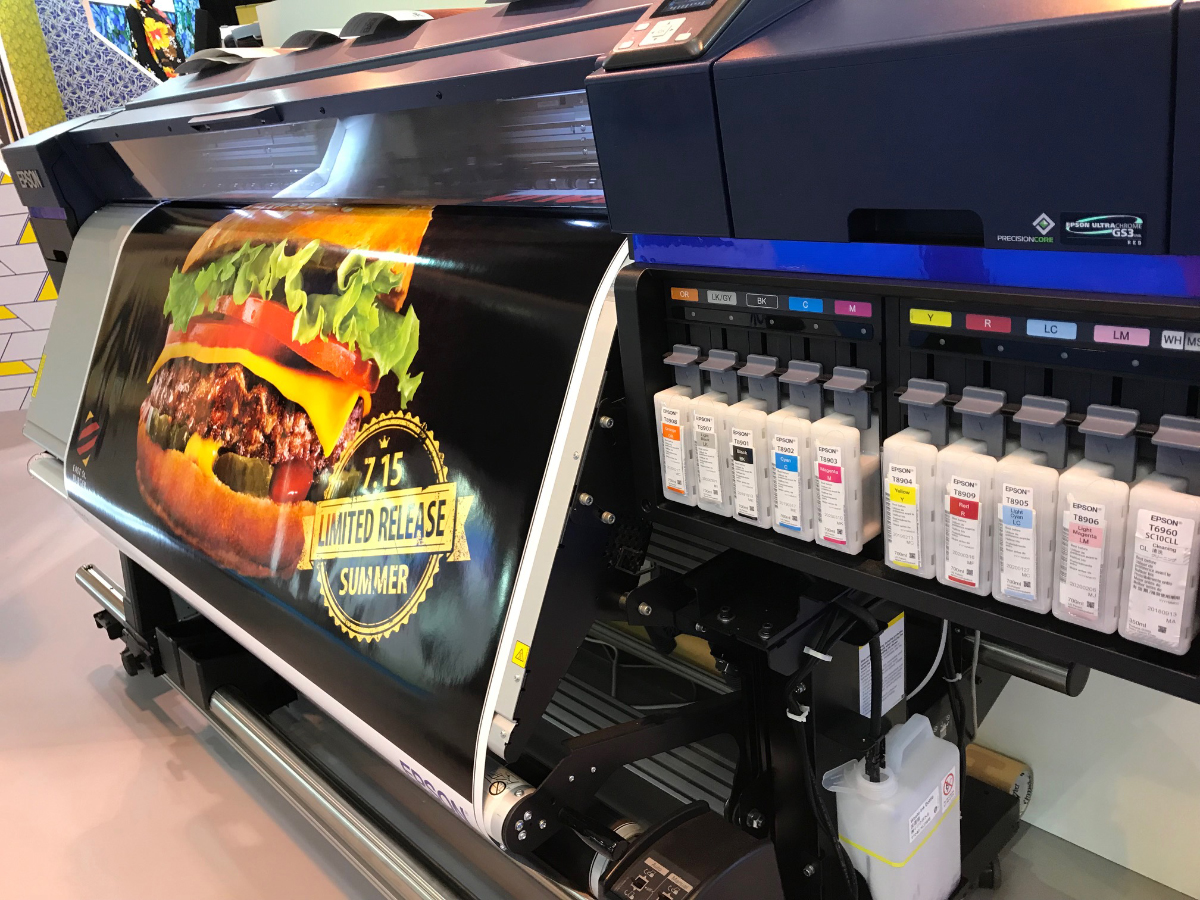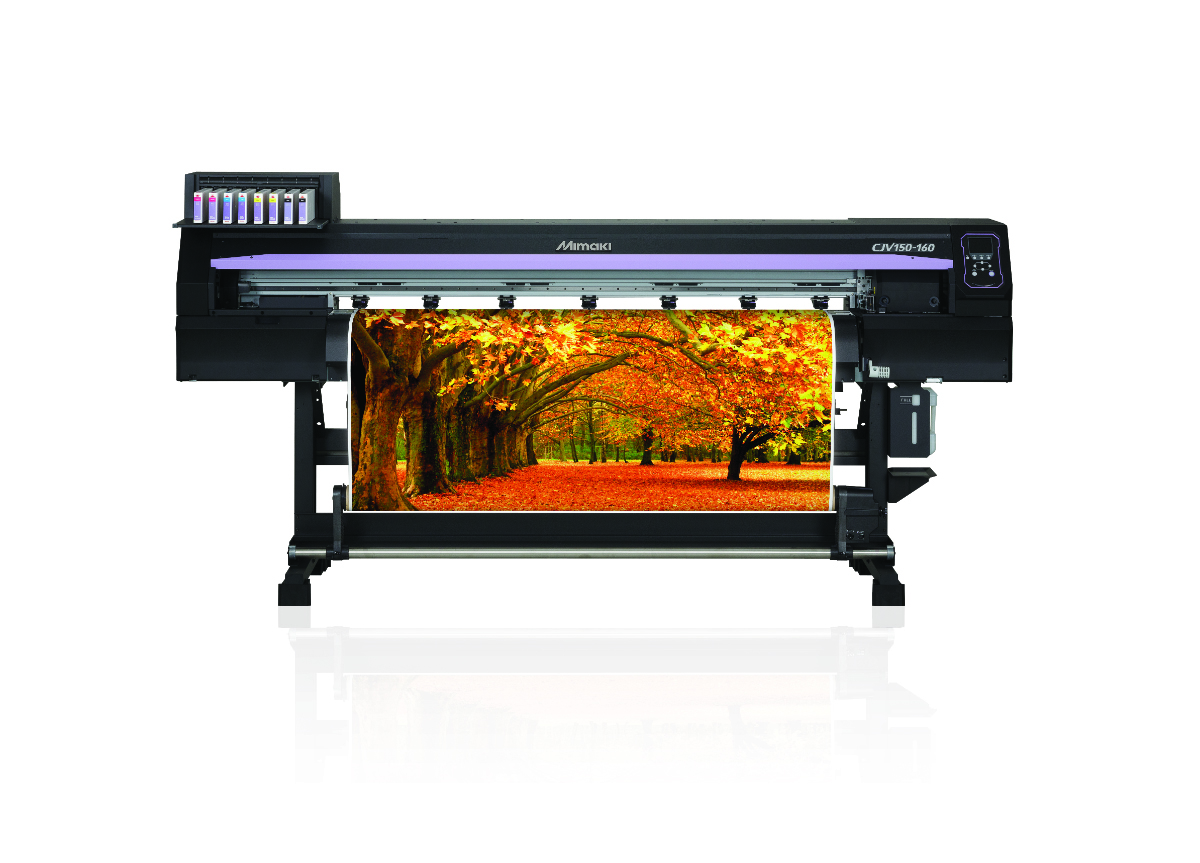Solvent printers are the mainstay of many a large-format print business but are the companies that make them invested in their future development?
Solvent printers make PSPs money. That’s the bottom line. But, when it comes to inkjet development, other ink technologies tend to steal the limelight. Given solvent is a mature technology - even eco solvent - that’s hardly surprising, so just how committed are manufacturers to the continued development in this space? And do you really care?
According to Jeff Biggs, MD of Colourgen (supplier of Epson and Mutoh solvent printers) the company “does not have requests from PSPs in regard to solvent printer development”. As far as he sees, “the only requests that we get is for lower ink cost and a more environmentally conscious solution than the standard cartridges.”
He points out that Mutoh has addressed both of the aforementioned requests with a 1l ink bag option for eco ultra inks. “Not only does this solution reduce ink costs, it is extremely flexible as it can be retrofitted by the PSP to the Mutoh their printer when the volume of print and ink usage rises. It also has the flexibility of allowing for a mix of ink bags and cartridges in the printer and thus reducing waste and removing the need to throw away cartridges that still have ink in them.”
Lucy Ratcliffe, director at Signmaster Systems (which sells Roland and Mimaki large-format solvent printers) takes up the theme: “Solvent inks continue to be improved and released by manufacturers, each time addressing the demands of PSP for more vibrant colours, faster drying, lower ink costs.”
As she notes: “Each generation of solvent hardware provides more productivity, lower maintenance and lower ink consumption. Solvent provides an unmatched glossy print finish and typically solvent machines can achieve a much higher DPI than alternative inks that require heads which are restricted by the viscosity of ink. Solvent machines remain to be the most stable of print technologies requiring the least maintenance and engineer visits.
Biggs continues in the same vein: “As the current eco solvent printers offer very high print quality, good flexibility in terms of the handling of different media types, and are very stable and reliable, there’s little to demand in terms of improvement.
“Also, eco solvent appeals to the lower volume/occasional users as a printer could be left up to six months without use and with a small clean, start printing to the same exceptional quality as it did six months earlier.
“Eco solvent printing will, in my opinion, be around and used for at least the next ten years.”
Agreed! But should we expect there’ll be nothing to get really excited about? We asked the major large-format printer manufacturers - those supplying solvent printers, and some that don’t - to provide their take on developments of the technology and its future place in the large-format marketplace. Overpage you can read the responses of three of them, but interesting enough, some manufacturers - including some key solvent printer producers - did not want to comment. Read into that what you will.

Looking at the solvent printer situation
Plenty of psps have solvent printers on their investment list, but this is a mature market, and many manufacturers are focussing on other areas of development.
What key technical developments - including those outside of solvent - are impacting large-format solvent printer development in general?
Wayne Barlow head of graphics and communications business groups, Canon UK: It has to be Canon UVgel, which was launched in May 2017 at Fespa. The technology comprises several elements that combine the benefits from other technologies - such as great colour gamut, low ink usage (eco solvent), no odour and no drying time (latex), high productivity and low temperature usage (UV).
The simplified stages of the Canon UVgel printing process are as follows:
- Inside the printheads, the UVgel ink is heated and turns from gel into liquid.
- The temperate controlled platen maintains the substrate at a constant 28°C.
- On contact with the media, the liquefied ink drops return immediately to their gel state.
- In their gel state, the ink droplets are ‘pinned’ instantly to the media, assisted by a partial LED ‘precure’ process.
- Full LED curing takes place at a later stage, after the image swathe is completely formed and gelled on the media.
Phil McMullin, sales manager, Epson UK: To be clear, our Epson inkset is eco-solvent so this is very low solvent, Greenguard Gold certified and 100% safe with no extraction system needed. The key developments in the current product line up include quicker drying ink, the widest colour gamut in the market (SureColor SC-S80600), spot red and orange for corporate colour matching, metallic ink for impact, white ink for window graphics and substantially reduced total cost of ownership. The vibrancy of ecosolvent ink compared to the likes of latex technology combined with the widest range of compatible media applications (achieved through low temperature operation) ensures that Epson eco-solvent is again highly relevant in today’s quality focused industry.
John de la Roche, national sales manager, Hybrid Services: Without doubt, some of the key technical developments are ink related, such as latex and solvent UV which have both paved the way for Mimaki’s use of its latest LED UV ink technology, found in the new UCJV printer/cutters. This new wide-format machine opens up a whole world of new and exciting revenue streams for PSPs looking to replace existing kit as well as new customers seeking the best ‘all round’ machine. This is thanks to the printer’s ability to output onto a wider range of media than printers using solvent, latex and solvent UV ink.
If you make solvent printers, is the number of European-based PSPs buying them from you in decline? And what about in the rest of the world?
Wayne Barlow head of graphics and communications business groups, Canon UK: Canon has never directly developed solvent printers as such, but we are focused on our ground-breaking UVgel technology and we’re delighted with sales of the first family member, the Océ Colorado 1640 system.
Phil McMullin, sales manager, Epson UK: Quite the reverse is true. We have seen annual unit sales in Europe double since we launched the latest generation of SureColor eco-solvent printers. The picture is very similar globally. By focusing on delivering the best image quality at high production speeds on even the lowest cost media, Epson is compelling PSPs to put eco-solvent back on their shortlist and once they have seen the printers in action, also into their print rooms.
John de la Roche, national sales manager, Hybrid Services: Not at all, solvent printers are more affordable than ever before. From Hybrid’s point of view, this means more potential customers have access to Mimaki’s solvent print-and-cut technology thanks to the barriers to entry being reduced. With a range of machines that include a wide variety of sizes, speeds and prices, Mimaki is in a strong position to deliver eco-solvent and solvent printers, whatever the customer’s requirement. Solvent printer sales per se remain buoyant. Their expected life in the field is significant, so a printer purchased last week will be producing great output many years down the line. There’s no doubt that alternative ink developments will eventually impact on solvent sales but for now, it’s still a relevant and proven technology that delivers a print that is commercially very widely accepted.
Where is your own focus in terms of solvent printer R&D?
Wayne Barlow head of graphics and communications business groups, Canon UK: Our focus will continue to be on developing Canon UVgel as this technology gives wide-format PSPs the technical capability to evolve in profitable new directions. Wide-format print demand is escalating, volumes are growing and there are enormous revenue opportunities coming from new substrates and creative applications that really redefine our expectations of print. UVgel will help our customers develop new and exciting business opportunities.
Phil McMullin, sales manager, Epson UK: Eco-solvent will continue to be a key technology for Epson for years to come and we will focus on delivering even higher quality print, wider colour gamut, faster print speeds, quicker drying times (so that prints can be laminated after shorter outgas times) and lower ink consumption.
John de la Roche, national sales manager, Hybrid Services: Mimaki continues to address the roll-to-roll market with new technologies, be it by delivering faster machines, more environmentally friendly solutions, printers that enjoy a lower cost of ownership, that deliver quicker ROI or even simply new ink configurations. Looking at the recent developments within Mimaki’s solvent portfolio you’ll see newly developed inks including metallic, light black and the very popular orange that delivers unparalleled colour accuracy and gamut.
As a ratio of your company’s R+D budget for the large-format print sector, is the proportion going into solvent printer/inks being reduced? Is there an expectation that it will cease altogether?
Wayne Barlow head of graphics and communications business groups, Canon UK: Canon’s commitment to innovation is reflected in our investment in R&D. Our consolidated R&D expenses were ¥302,376m in 2016 and Canon consistently spends over 8% of its consolidated total net sales annually on developing new technologies, including print, and for the past 30 years we’ve continually ranked among the top companies in the world for the number of patents registered in the US.
Phil McMullin, sales manager, Epson UK: R&D investment for the whole of Epson is in the region of $1.6m per day. Ecosolvent is just one of the ink chemistries we have worked with over the years. We are also working on enhancing our aqueous, dye sublimation, direct to garment (DTG), resin and UV ink sets for the production environment.
Yuji Ikeda, MD, Mimaki Europe: We are still committed to the solvent market - it’s an important part of our business, and we do not foresee reductions in the R&D budget in this area in the foreseeable future. In fact, we are still innovating in solvent printing and inks to be able to bring new products and opportunities to our customers. You can expect to see ongoing innovation from us in the form, perhaps, of new printers, or something entirely new and different. Stay tuned!
Should we expect new solvent printers from you in 2018?
Wayne Barlow head of graphics and communications business groups, Canon UK: Canon is committed to developing UVgel to grow our market presence. The Océ Colorado 1640 is our first-announced printer in this family using this technology. We can’t yet give details on future developments, but watch this space!
Phil McMullin, sales manager, Epson UK: Epson does not announce new products in advance but rest assured that we are continually working on ground breaking developments across all areas of our production print business. Currently our range of SureColor SC- S series of eco-solvent printers have the number one market share position in its class in Europe and we expect this share to grow further in 2018.
Yuji Ikeda, MD, Mimaki Europe: Our goal is to introduce new products to the market every year. We have no specific plans we can talk about in the solvent space. Of course, that doesn’t mean we have no plans, just that we are not ready to talk about them at this time.


